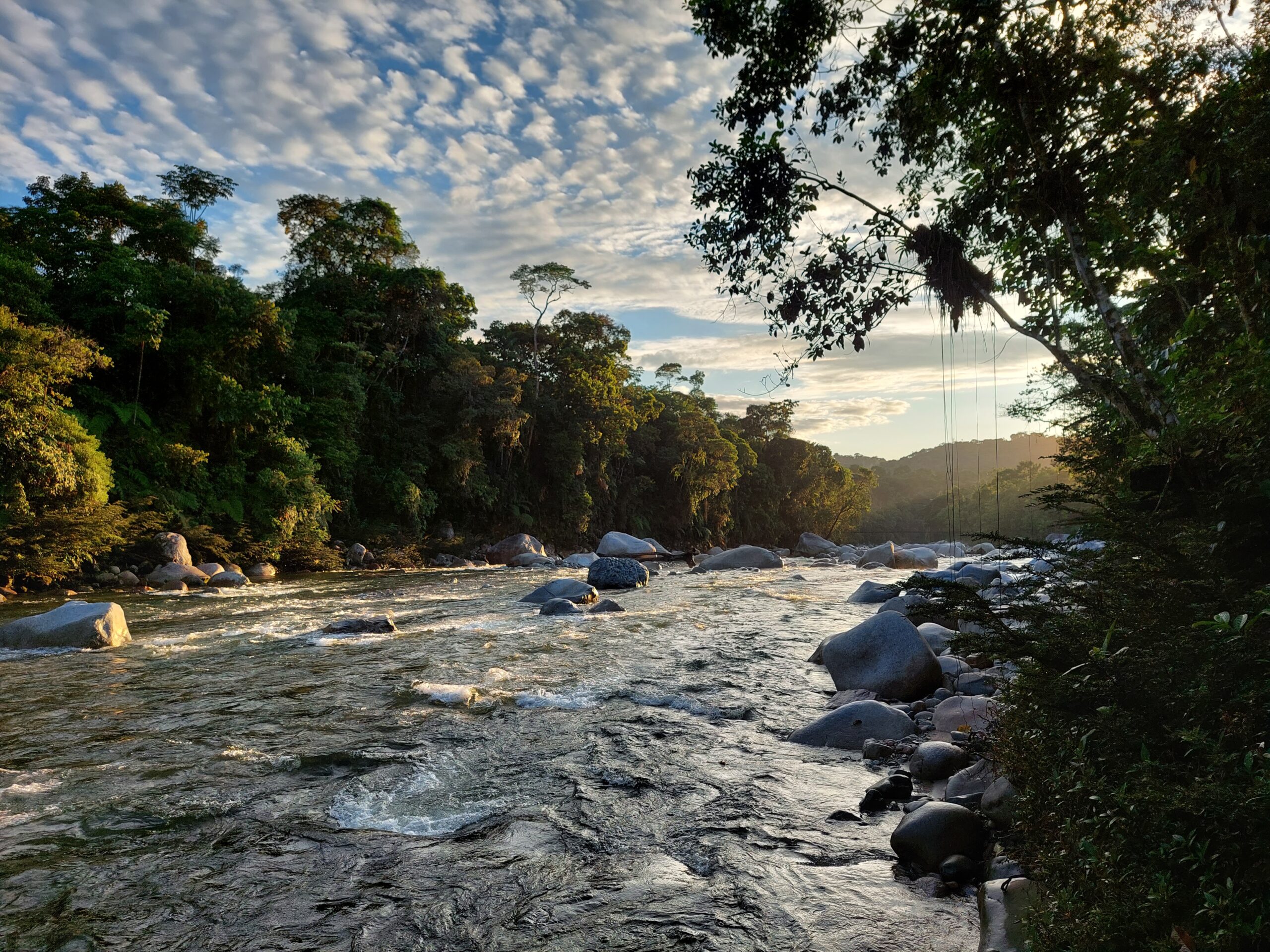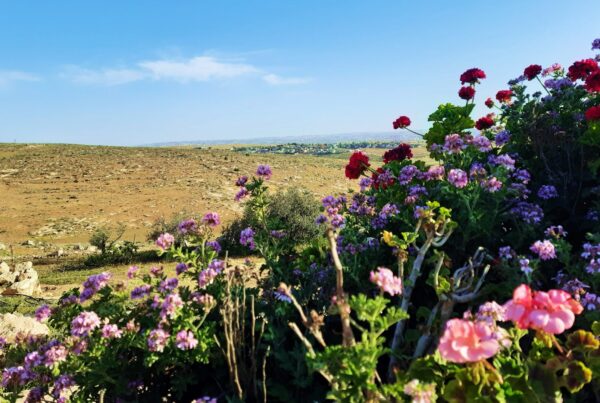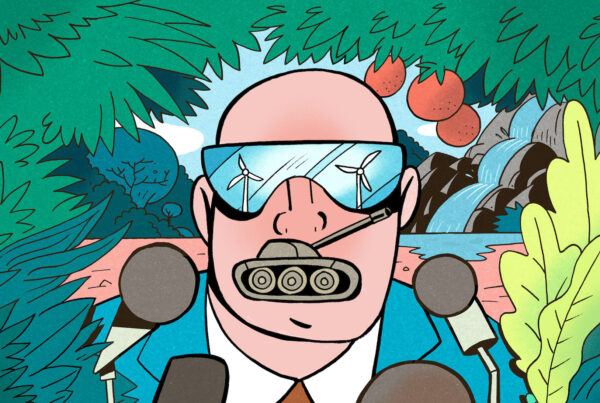By Carlota Houart
In the Amazon rainforest, as around the world, rivers are increasingly being dammed, mined, and polluted. As they choke, dry, and die, so are their rich communities of life being severed from their source; so are local Indigenous communities being deeply impacted; and so are uniquely powerful stories about the bonds that tie human and non-human beings together being silenced. The Piatúa is still a free, wild, and pristine river. Will it remain so…?
Introduction
In the following paragraphs I will take you with me on a reflection about my fieldwork experiences with the Piatúa River, one of the last free-flowing rivers of the Ecuadorian Amazon rainforest, and how it has been informing my journey as an activist researcher.
To tune into its world, I invite you to listen to the Piatúa’s soundscape through this link. It will take you to a collective sound installation, the Chorus of Singing Rivers. On the bottom left corner, you can find Río Piatúa and listen. If you click multiple times on the same image, you will add newelements to the soundscape, rendering the river’s voices a growing chorus.
When I first set eyes on the Piatúa, I was silenced by the beauty of its crystalline waters and by the power of its roaring voice. I quickly became aware that I was standing before a very special being, one who was – at that point – still a stranger, but with whom I hoped to become acquainted over time. This was in March 2023.
In November of the same year,I returned to the river with Alex Knott, an anthropologist who moved to the Ecuadorian Amazon and is now a member of PONAKICSC through marriage, and with two young Kichwa women from the area who are students at a school in Santa Clara. My fieldwork notes from that time say: “Today we came to Piatúa KawsakYaku, just above Shalypo, for our first camping weekend (…) and set up our tents under a chosa after having lunch in Santa Clara. Afterwards we went to the river, which is right next to the camping site. I asked the river for permission before entering its cold, clear waters. The flow of the Piatúa is as strong as I remember it from last time: I can feel its pulse against my legs, against my body. Standing on a stone, trying to keep my balance, waist-deep in the water, my hands feel electrified. This river is full of energy, a wild force that is obvious also in its loud voice – very loud! Thinking of the Mondego River back in my hometown, in Portugal, I wonder again about what brought me here. And it feels like part of the reason why is to see, to experience a wild and free river as it should be.”
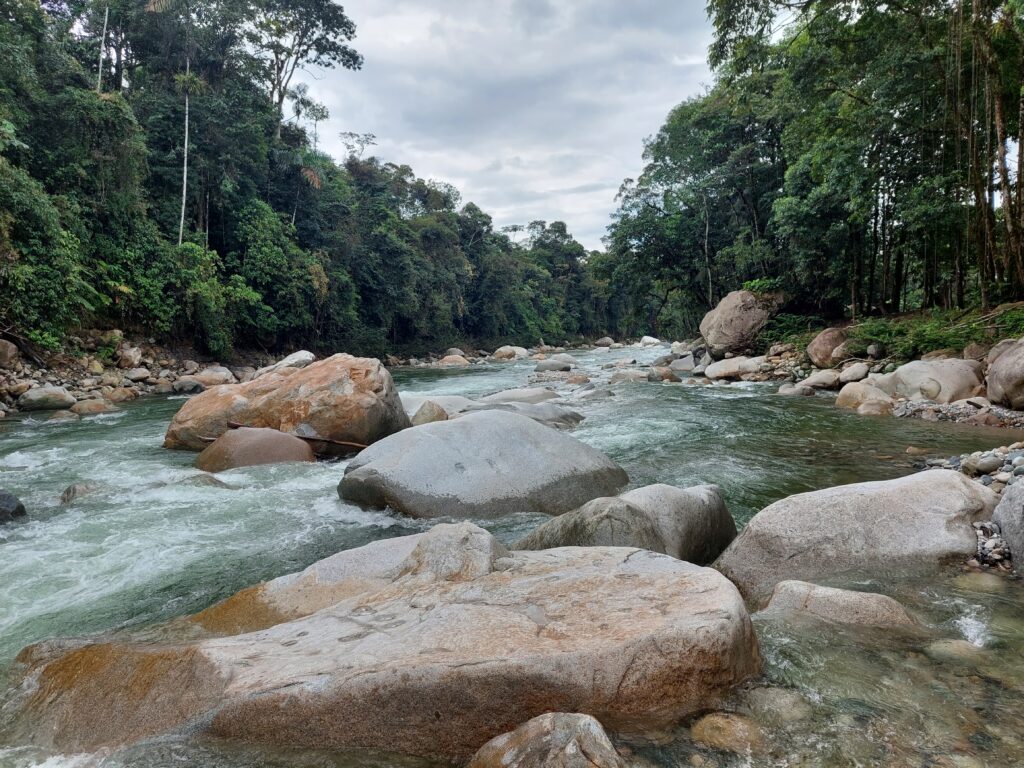
The Piatúa River, Ecuadorian Amazon. Source: Carlota Houart, 2023
A river is a river and not only such. I am reminded of this when I read Marisol de la Cadena’s words about a mountain in Peru. “Ausangate was a mountain and not only such. My friends’ insistent phrase ‘not only’ became a tool to open possibility for entities to be beyond my ability to know them: an earth being for example”. Amongst countless articles and books that I have been reading throughout these years, these words stayed with me. Teased me.
What if, as academics, as scientists, instead of engaging with rivers, mountains, or forests as inanimate matter or as passive landscape, we would start the other way around – open to the possibility of them being animate and alive?
How would that affect our thoughts and practice? How would that influence our way of doing research and of engaging with our research subjects? What if we thought of rivers not only as our research subjects but also as research partners?How do a river’s changing features, flow, ecology, colours, behaviour, shape the questions we formulate and the hypotheses we wish to test? Why is it that, when doing research with rivers (or any other ecosystem), we depart from the assumption that they are inanimate, mostly background for human activity?
As political ecologists, we cannot disregard the fact that the choices we make as to how to approach our research (including our research subjects) are inherently political. The prevalent tendency to see rivers, mountains, forests from a commodifying, mechanistic perspective within western academia is the direct result of onto-epistemologies that stemmed from the Scientific Revolution of the Enlightenment period. This “revolution”, in turn, was a patriarchal project closely related to the imperialist, later capitalist, projects of the nation-state and the market. And these projects are before anything else all anthropocentric. They were never a neutral choice. So, it is not a neutral choice either for us, as scholars, to perceive non-human nature as lacking agency, aliveness, consciousness.
Rivers as living entities and multispecies communities
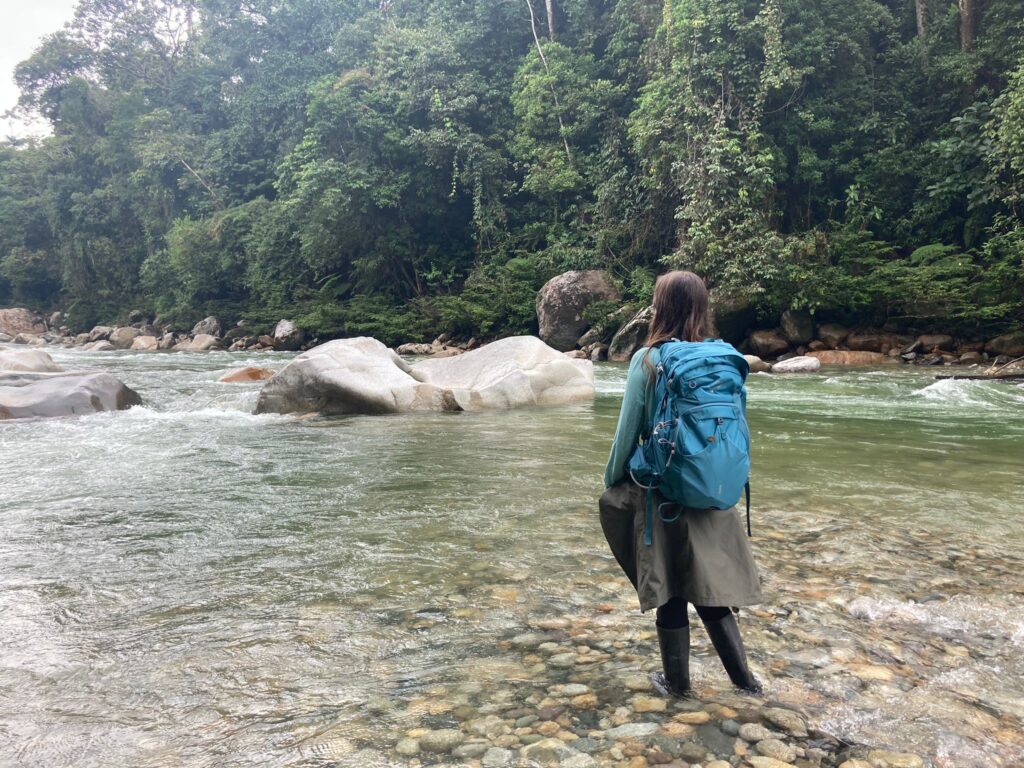
Being with the Piatúa River. Source: Catalina Rey
When I first encountered the Piatúa in early 2023, I was already working with the belief that rivers are living entities. Not only that but also multispecies communities: an assemblage of many other beings and life forms (animal, vegetal, mineral…). My findings during the course of the research never contradicted that assumption.
The conviction that rivers are multispecies communities is something I brought with me from my long-term engagement with the Mondego, the river next to whom I grew up and lived for the first twenty-five years of my life, in central Portugal. The Mondego taught me to see a river simultaneously as a living entity and a multispecies community. (We are all – human beings included – living beings and multispecies communities at the same time. Think of the countless microbes and bacteria that we lodge in our bodies).
Hours spent by that river, quietly sitting at the water’s edge, watching and listening, gave me an intimate picture of how the river’s shapes, flows, movements, colours shift and transform from morning to evening; one day to another; and one season to the next. They gave me an intimate picture of the multiple beings who live in, with, and around the river and how they go about their daily coexistence – or their everyday territorial politics.
Once I had spent enough time with the Mondego, I was no longer able to see it as passive or inanimate. Neither the Mondego nor any other river, for that matter. I was prepared to encounter the Piatúa open to the possibility of it being something – or someone – beyond my ability to fully know it. And as I write these words now, I feel the discomfort of referring to this water body as an “it”, the discomfort of our imperfect language that draws such a profound ontological rift between human and other-than-human persons by referring to them in the object form. This objectification in language, which paves the way for objectification in practice, is far from the grammar of animacy that Robin Wall Kimmerer writes about, and that multiple non-western, indigenous communities share.
But for now, I stay with the cognitive dissonance: the discomfort of writing “it” while acknowledging that I see this river as a very living entity – not an object. It has become part of me as an activist researcher working with rivers and with groups mobilizing to defend them. Mainstream western academia still insists on the importance of maintaining a “neutral”, “scientific”, “technical” language that does not dare stray far from the accepted canons (cartesian dualism; positivism) that underpin most of western science. Yet which science or research has ever been truly neutral? As Robert Cox, one of the founders of Critical Theory, one day wrote: “theory is always for someone and for some purpose”. I have been carrying this sentence with me as an amulet since my undergraduate years. As a compass.
I may be an academic, yet I am also a human being who has been deeply in love with rivers and their multiple co-inhabitants for many years. Love? Do I dare to speak of love in the midst of a reflection about science, about politics? How undisciplined of me! But my commitment to researching and working with rivers, my path of academic research – they have sprung from being in relation with rivers and their multispecies communities. This relationality was born and is constantly reborn from a place of encounter that rejects objectification, that refuses human exceptionalism.
I am by far not alone. I am indebted to the writings of many wise and daring scholars who have been inspiring me for years, including Deborah Bird Rose, Val Plumwood, Donna Haraway, Anna Tsing, Eva Meijer, Robin Wall Kimmerer, David Abram, Eduardo Kohn, Arturo Escobar, Thom Van Dooren, and several others. And a propos, did not Deborah Bird Rose write, reflecting on the work of Val Plumwood, that “in opening one’s self to others as communicative beings, one places one’s self in a position of being able to experience communication?”. It is sometimes as simple as: “(…) as other creatures live their lives, so they communicate aspects of themselves”.
The Piatúa River, Mayu Waka Rumi
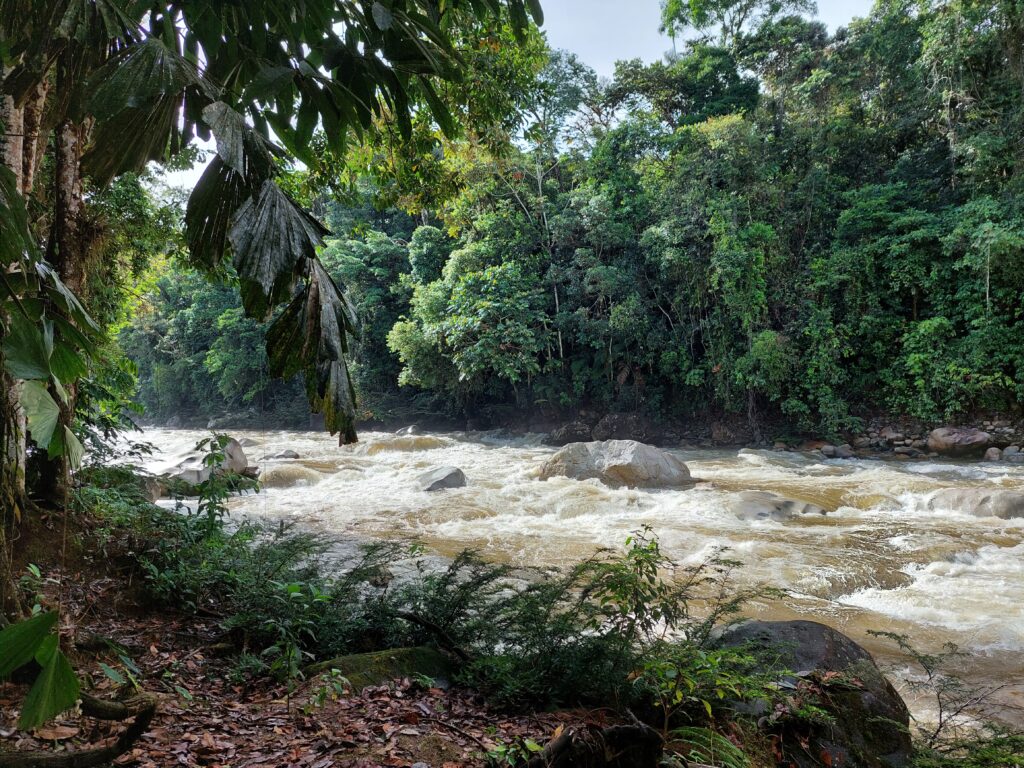
The Piatúa River. Source: Carlota Houart, 2023
The Piatúa is born under the misty cover of the Llanganates Mountains in Ecuador. It runs downwards through the rainforest, meandering through this green world until it joins paths with another river, their bodies merging as one. Each river is unique, but all waters are the same – have you ever thought about this?
I think it could teach us quite a bit about ourselves. As Astrida Neimanis notes: “our own bodies, which are primarily composed of water, elucidate the problem of thinking about bodies in binaristic terms as either ‘natural’ or ‘cultural’. We are both materially and semiotically entwined with other bodies of water in a gestating, differentiating and interpermeating relation”. That was one of the first lessons the Piatúa taught me.
This river forms a unique ecological corridor connecting Andean and Amazonian landscapes. Its watery territory is home to a myriad of animals and plants, including frogs, sardines, catfish, nutrias, jaguars, tapir, agoutis, monkeys, toucans, parrots, deer, sloths, owls, orchids, ferns, ceibo trees, and countless others. Countless indeed they are, and perhaps that is how they should remain. Beyond our ability to fully know them. But please allow me to name some of them, for that is also a political gesture that refuses to lump all nonhuman beings together under the abstract term “nature”.
Thought to be millions of years old, the Piatúa is, I am told by my hosts, one of the last rivers in the Ecuadorian Amazon to be flowing freely, with no dams or large-scale mining and pollution. So far.Indigenous Kichwa communities have lived by the Piatúa for generations. Petroglyphs carved on stones along the river’s course show signs of human presence for what could be a much longer time. The Piatúa is known in Kichwa as Mayu Waka Rumi, “River of Sacred Stones”. This nickname reflects the fact that the riverbed and riverbanks contain many large, impressive stones, several of which are said to be inhabited by supernatural beings and spiritual powers.
On my first visit to the Piatúa, I was introduced to a few of these stones and to the stories that they hold by some of the local Kichwa inhabitants. I remember the stones that are known as the camino del puma, the trail of the jaguar. I remember hearing about the stone under which a giant boa slept for many years, under the watchful eye of a yachak (wisdom keeper; in other words, shaman). I vividly remember Sirena Rumi, the stone in the middle of the river that is inhabited by the YakuWarmi (“Woman of the Water”): a being with the head of a beautiful, long-haired woman and the body of a snake. She sings an eerie melody that perhaps you may be fortunate enough to hear in the quiet of the night; and the water in front of her stone is believed to possess healing properties. Many local Kichwa have bathed and continue to bathe in those waters to balance their energy or to cure particular ailments.
Stories about the river were shared throughout each day. When we were cooking on fire, a dozen meters from the water; when we were walking along the river on the way to a family’s chakra (little farm); or when we were sitting together in the evening… you never knew when a story would pop up, either told or sung in Kichwa. These stories were never limited to Piatúa: they wove the river into an animate tapestry of animals, plants, spiritual beings, and humans that inhabit the jungle surrounding the riverine territory, and that are part of a rich, vibrant assemblage of which humans are only one part.
Such stories do not merely enliven the more-than-human world of the local Kichwa. They create a sense of respect, principles of coexistence, an ethics of care that holds these people accountable to different beings, lands, and waters. For instance, in Kichwa there is not a linguistic objectification of non-human beings; no object form “it”. At the centre of this cosmovision is Piatúa, a powerful river who demands respect.
Intermezzo: a lesson from the river
I remember nights of restless sleep in my wooden hostel room in Tena, in the province of Napo, my homebase during fieldwork. An anaconda visited me in my dreams, slithering into the room with her large body and penetrating yellow eyes. Her movement reminded me of the river snaking through the jungle. I kept thinking of the words: there is no beginning and no end… A river is a part of the whole… (…) a river does neither begin nor end in a specific place, but it is connected to all rivers, all the waters of the world…
Where does the Piatúa start, and where does it end? It flows into the Anzú, which flows into the Napo, which flows into the Amazonas, which flows into the sea… and the water is absorbed into clouds and those clouds travel back toward the mountains and the water falls as rain into the same territory where the Piatúa’s spring constantly gives birth to the river. These thoughts kept intriguing me. Did they mean anything at all?
Their political significance soon became apparent to me. If, indeed, a river is connected to others, as all waters in the world are connected, how can we – as activists, researchers, social movements working for the sake of rivers and water – be separate, fragmented, independent in our struggles and movements? If we strive for the protection of one free-flowing, unpolluted river upstream, but another river downstream is being mined and polluted, the waters of the first river will eventually flow into those contaminated waters… One affected ecosystem is connected to the rest.
How can we oppose dam-building in one river, but not stand up for a river that has already been dammed and polluted in another region? Of course, one person cannot be part of all movements, but the Piatúa’s message was clear: we must flow together. We must work together. Our struggles are intersectional, interrelated. We are (I hope) working against the ongoing march of imperialism, extractivism. We are swimming against the current, trying to build a world where rivers – and all beings – can be free. Drawing from Audre Lorde, I am not free while any river is unfree, even when this river’s shackles are very different from my own.
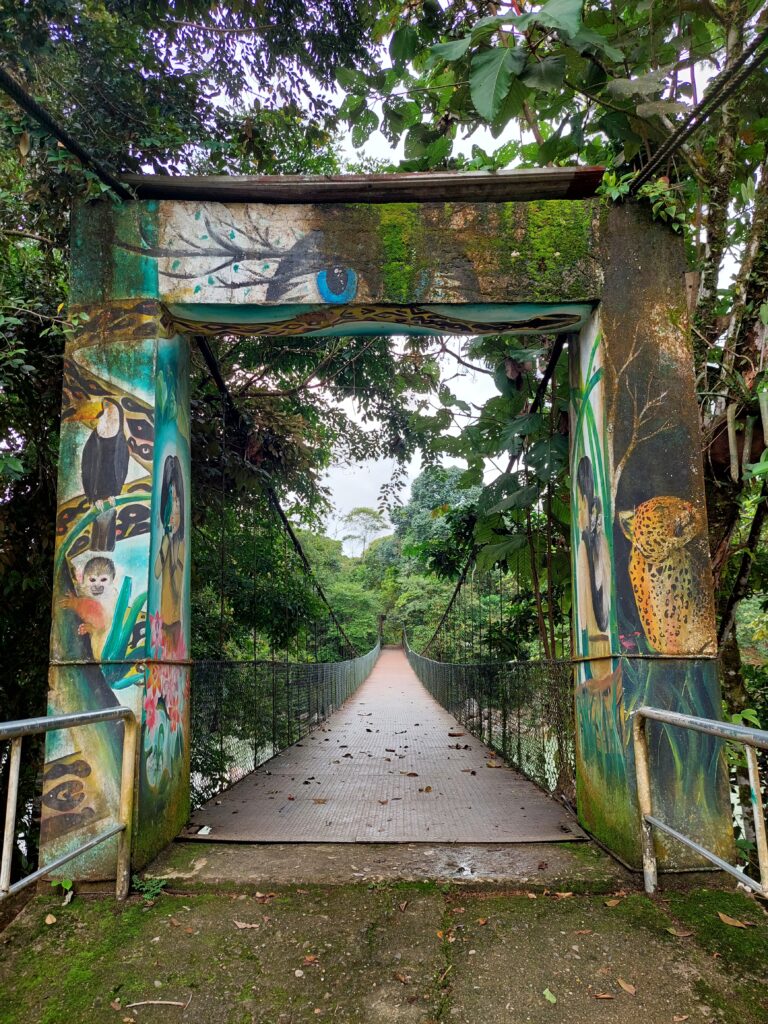
Bridge crossing the Piatúa, close to Santa Clara. Source: Carlota Houart
This river shall not be dammed
Despite its immense beauty and pristine biodiversity, the Piatúa is also not safe. It has been targeted by a hydropower development project since 2014. Ecuadorian energy company Genefran S.A. (working under the umbrella of Elit Energy) has been trying to build a hydroelectric dam in the river for ten years.
The project was originally approved by the Ecuadorian Ministry of the Environment, Water and Ecological Transition, but was met with immediate resistance by members of the local Kichwa communities. The river’s defenders argue that the dam would destroy the Piatúa, since it would divert approximately 90% of its water volume. It would endanger people’s livelihoods and severely impact the lives and homes of the multispecies communities, including endemic and endangered species.
It would also deeply affect the cultural-spiritual ties that have been weaving the Piatúa and local Kichwa inhabitants together for multiple generations. It is by no chance that the people standing up for the river are, in part, those that told me stories of its powerful personality, of its healing energy, of the extraordinary beings inhabiting the river’s sacred stones, of the jaguar and the anaconda and innumerable other beings. The people who know this river as a lively, sacred entity are those that do not wish to see it dammed.
Activists opposing the dam also argue that the project was approved without the free, prior, and informed consent of the communities, in direct violation of Indigenous People’s rights according to Ecuador’s Constitution. Not only is this dam project a violation of their rights, but also of the rights of the river itself, as they are acknowledged by the constitutional chapter on Rights of Nature.
Their resistance is supported by concerning precedents. During my first stay in Tena, I met a renowned international kayaker and river lover who showed me footage of a nearby river, the Pusuno, where the same energy company succeeded in building a hydro dam around the same time. Footage shows what was once a flowing, lively river becoming a small, dried up, silent version of who it once was. These kayakers and river defenders produced a documentary that tells the story of a dying Pusuno. To think of the same fate befalling the Piatúa tightly clenched my heart.
The Piatúa’s defenders have not stopped. In 2018, when operations in the area began to cut pathways through the rainforest for bulldozers to drive through, PONAKICSC (the official organization of the Pueblo Originario de la Nacionalidad Kichwa del Cantón de Santa Clara) held a general-assembly and led protests to expel the company workers. Around the same time, a youth collective called Piatúa Resiste was formed, which sought to rally support from local community members and from national and international partners, including environmental organizations working with Rights of Rivers and engaged scholars and scientists. Eventually, their web-weaving reached me as well.
(Speaking of which, I remember the most fascinating spider during one of those nights by the Piatúa, busily weaving her web as I watched in silence and awe… She was working so fast, dancing from one side to another, building perfectly and delicately… She made me think of the movements we ought to build together, weave into each other).
Unfortunately, not everybody who lives in the area opposes the dam. Some local inhabitants are in favour of it, because they believe the economic promises of the company (even though the people of Pusuno have seen the emptiness of such promises). Interestingly, some individuals who were originally in favour of the dam have since changed sides and now stand up in defence of the river, even at the cost of threats to their own lives. I met some of them. They are moved by the same quiet yet fierce belief that I have seen in many different countries and movements where people keep rising up for life.
Currently, the case is in the hands of the Constitutional Court of Ecuador. It has been pending a decision for a couple of years. Meanwhile, a campaign is underway to declare the Piatúa cultural heritage of the local Kichwa people and of Ecuador. Led by PONAKICSC and by Piatúa Resiste, it aims to grant the river protection through this means. The campaign relies on the demonstration of long held, long nurtured ties between the river and its communities, through oral history, cultural traditions, and everyday practices of those who live with the river. The Piatúa’s defenders are also going to release an independent documentary. They hope to amplify the river’s story, grow the echo of a movement that is opposing the relentless consumption and extraction of (human and non-human) peoples, lands, and waters everywhere on Earth.
For intersectional and glocal river movements: our struggles are connected!
Despite a great diversity of contexts, cultures, struggles, and movements, rivers around the world such as the Piatúa – and all their multispecies communities – are struggling to survive under the ongoing march of a political-economic system that sees them as no more than material-to-be-turned-into-profit. Nevertheless, through every contact they establish, through every relationship that they nurture with somebody who is open to the possibility of them being beyond our ability to fully know them… rivers refuse to be seen as material; or as passive. They refuse to be known as such. In a sense, I very much believe that they are recruiting river lovers, activists, critical researchers, socio-environmental movement builders, artists, and others to move, work, and speak on their behalf, for the sake of all life.
There are those who still (and once again) listen to the voices of rivers, and who raise their own so that these bodies of water (as we all are) can continue to live and reproduce. So, to all of us who sit in our offices and within the walls of our universities, I say: go outside! Sit by a river. Listen to the people who have always lived by the water’s edge. Observe and listen to the animals and plants who grow by, in, and around the river. This listening is deeply political. It invites us to question fundamental assumptions about I and Other, about River and (Non)Human, about Body and Territory, about how we ought to relate to each other.
The outcome of the struggle in defence of the Piatúa has not yet been revealed. The threat of hydro-extractivism still and always looms large. Yet I derive some hope from the fact that there are always those (either in the Ecuadorian Amazon, or elsewhere on Earth) who refuse to stay quiet, to stay still. We must begin with ourselves if we wish to see any change materialize. We are all hydrocommons. We have never been neutral. Neither as researchers nor as human beings. We have always been interdependent, and never only human.
May the Piatúa stay wild and free. May all rivers be free. May all peoples, lands, and waters be free.
Resources:
More information about the campaign in defence of the Piatúa: www.piatua.org.
Short film with the story of the movement in defence of the Piatúa River: https://tawna.org/peliculas/piatua-resiste/.
Acknowledgments:
I wish to thank the Piatúa and the countless beings who form part of it for teaching and inspiring me. I wish to thank Alex Knott, Darling Kaniras, Jessica Grefa, Alexis Grefa, the families who hosted me in their homes(D. Inés, Carla, Pablo, Rute, Gonzalo…), and other members of PONAKICSC and of Piatúa Resiste for welcoming me into their world and lives, and for sharing their stories and struggles with me. Finally, I wish to thank Carolina Cuevas, Catalina Rey, and Laura Giraldo-Martínez for the beautiful work they are doing with the collective sound installation Chorus of Singing Rivers.
Funding information: This personal reflectioncomes from research being developed within the project “Riverhood: Living Rivers and New Water Justice Movements” at Wageningen University, the Netherlands. Riverhood has received ERC funding under the EU’s Horizon 2020 program (grant no. 101002921).
Carlota Houart is a PhD researcher at Wageningen University, the Netherlands. She works in the international, interdisciplinary research project “Riverhood: Living Rivers and New Water Justice Movements”. Her research focuses on multispecies justice in the Piatúa River, in Ecuador, and in the River Maas, in the Netherlands. Apart from her academic path, Carlota has been involved in movements like Extinction Rebellion and the Global Alliance for Rights of Nature.


